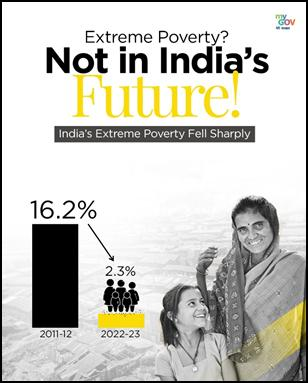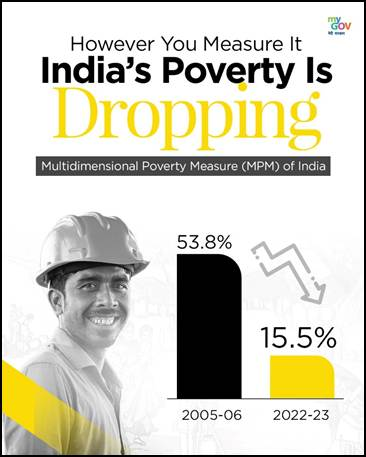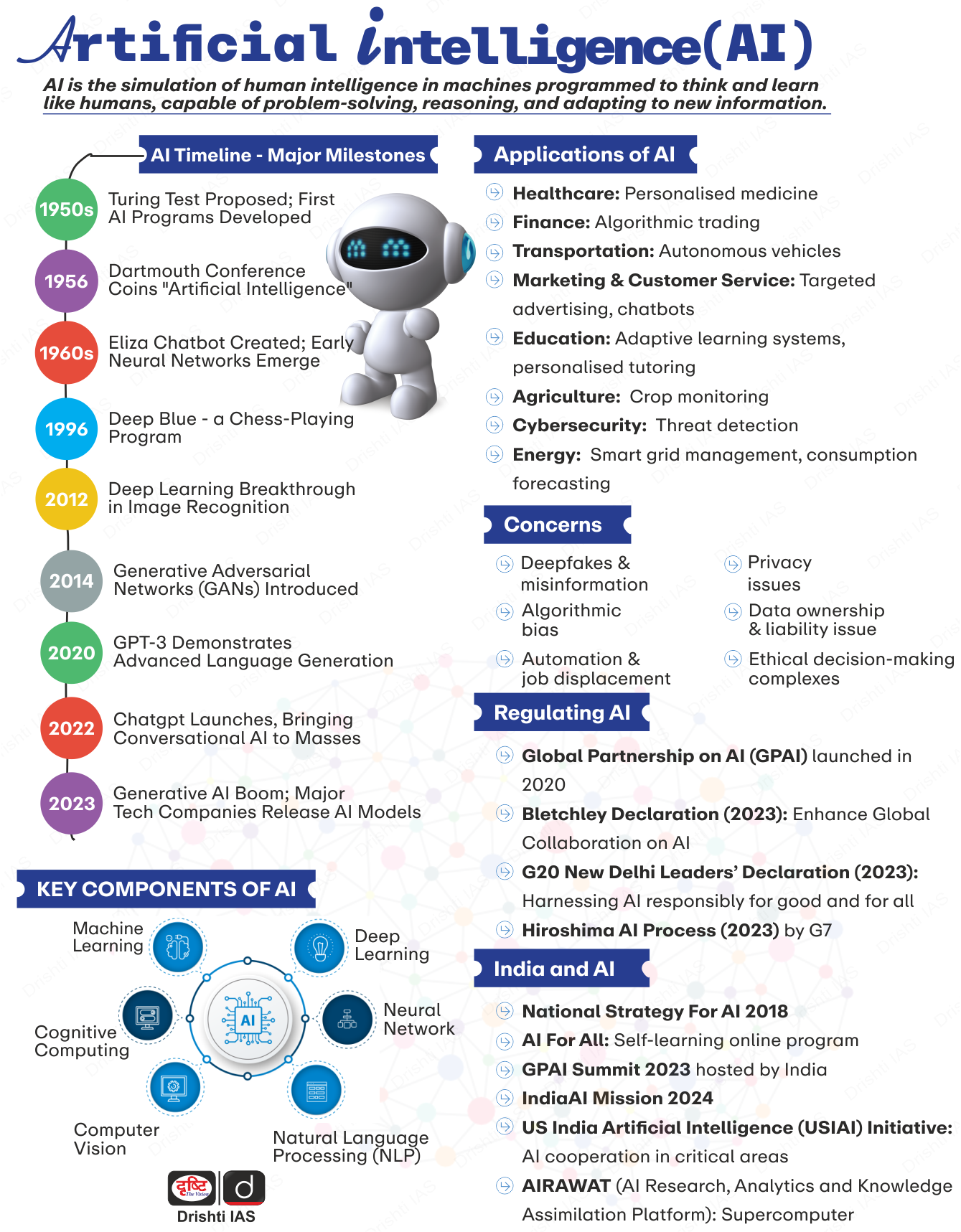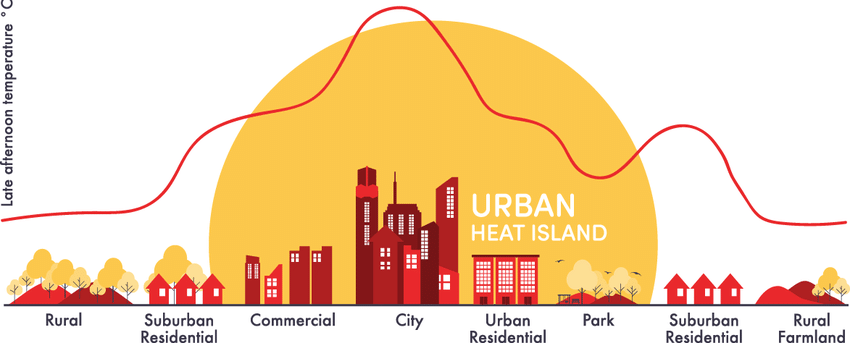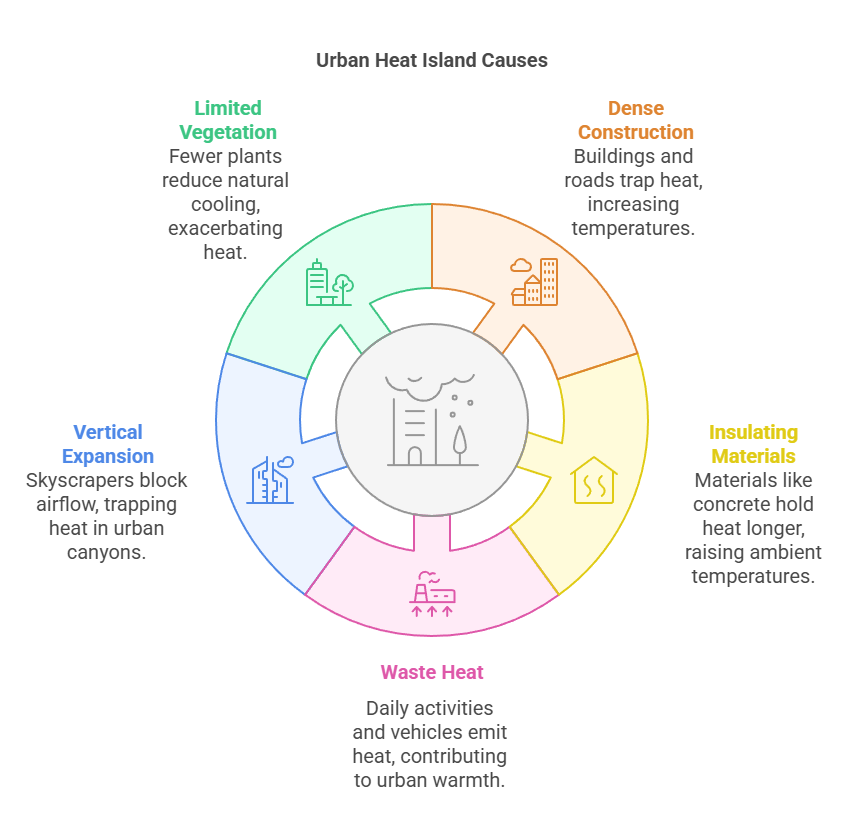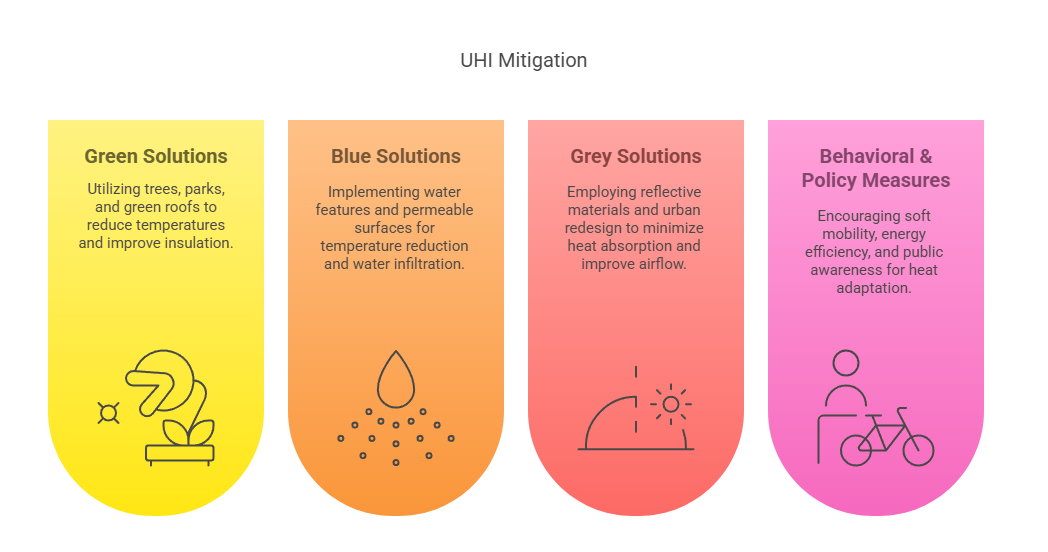Social Issues
World Bank’s Poverty & Equity Brief Report
For Prelims: World Bank, Multidimensional Poverty Index (MPI), World Economic Forum’s Global Gender Gap Report, Pradhan Mantri Ujjwala Yojana, Public Distribution System (PDS), PM Surya Ghar: Muft Bijli Yojana
For Mains: Poverty in India: Associated Social Issues Related to Poverty and Way Forward
Why in News?
The World Bank’s Spring 2025 Poverty and Equity Brief report praised India for lifting 171 million people out of extreme poverty from 2011-12 to 2022-23, lowering the extreme poverty rate from 16.2% to 2.3%.
- This highlights India’s dedication to inclusive development through welfare schemes, and improved access to essential services.
What are Poverty and Equity Briefs (PEBs)?
- About: The PEBs, published biannually during the Spring and Annual Meetings of the World Bank Group and International Monetary Fund (IMF).
- It provides insights into poverty, shared prosperity, and inequality trends for over 100 developing countries.
- Key Development Indicators: Cover various aspects of poverty, using both national poverty lines and international benchmarks (USD 2.15 for extreme poverty, USD 3.65 for lower-middle-income, and USD 6.85 for upper-middle-income).
- A multidimensional poverty measure that accounts for non-monetary deprivations like education and basic services, and inequality measurements using the Gini Index.
- Methodology for India: The World Bank’s poverty estimates for India are based on the 2011–12 Consumption Expenditure Survey (CES) and the 2022–23 Household Consumption Expenditure Survey.
What are the Key Highlights of the Poverty and Equity Briefs Report by the World Bank?
- Rural and Urban Poverty Reduction: Extreme poverty in India fell significantly, from 18.4% to 2.8% in rural areas and from 10.7% to 1.1% in urban areas between 2011-12 and 2022-23.
- Statewise Contribution: In 2011-12, the five most populous states- Uttar Pradesh, Maharashtra, Bihar, West Bengal, and Madhya Pradesh accounted for 65% of India’s extreme poor. By 2022-23, these states contributed to two-thirds of the overall decline in extreme poverty.
- Decline in Multidimensional Poverty: The report highlighted a decline in non-monetary poverty, with India’s Multidimensional Poverty Index (MPI) dropping from 53.8% in 2005-06 to 16.4% in 2019-21.
- By 2022-23, the World Bank’s Multidimensional Poverty Measure stood at 15.5%, indicating continued improvements in living conditions.
- India’s consumption-based Gini index improved from 28.8 in 2011-12 to 25.5 in 2022-23, indicating a reduction in income inequality.
- Employment Growth and Workforce Trends: Employment rates, especially for women, are rising, and urban unemployment is at its lowest since 2017-18. However, only 23% of non-farm paid jobs are formal.
- Despite 31% female employment, there are still significant gender gaps, with 234 million more men in paid work.
- Progress at Lower-Middle-Income Level: At the USD 3.65 per day poverty line, India’s poverty rate dropped from 61.8% to 28.1%, lifting 378 million people out of poverty.
- This reflects that the benefits of economic growth have reached the lower-middle-income groups in both rural and urban areas.
Note: The Gini index determines a nation's level of income inequality by measuring the income distribution or wealth distribution across its population.
- Generally, developed countries tend to have lower Gini coefficients (e.g., below 0.30), indicating relatively lower income or wealth inequality.
What are the Associated Social Issues Related to Poverty?
- Marginalization of Vulnerable Communities: Poverty deepens the marginalization of SCs and STs by limiting their access to education, healthcare, and employment. Discrimination in education, poor health outcomes, and restricted job opportunities in low-wage sectors further entrench their socio-economic exclusion.
- Health Disparities and Malnutrition: Health issues are widespread in poverty-stricken areas, where inadequate access to nutritious food and healthcare exacerbates health outcomes.
- Government initiatives like the National Nutrition Mission (POSHAN Abhiyaan) aim to combat malnutrition, however, challenges persist in ensuring effective implementation and reaching the most deprived populations.
- Water Stress and Scarcity: Communities in poverty, particularly in rural areas, are disproportionately affected, with limited access to clean drinking water, leading to waterborne diseases and poor sanitation.
- The NFHS-5 reports that 49.8% of rural households still lack access to piped drinking water.
- Energy Poverty: In rural India, particularly in tribal and backward regions, lack of access to affordable energy limits educational and economic opportunities.
- Despite efforts like the Pradhan Mantri Ujjwala Yojana, data deficiency in the SECC 2011 has excluded many deserving households, hindering the shift from firewood to LPG.
- Mental Poverty: Poverty causes chronic stress, anxiety, and depression due to financial insecurity and social marginalization, reducing productivity and social participation.
- The stigma around poverty discourages help-seeking, while unemployment (affecting 29% of graduates) and rising inequality, worsen mental health challenges.
- Gender Disparity: Gender disparities in impoverished communities, such as early marriage, domestic violence, and limited workforce participation, perpetuate the poverty cycle.
- A World Bank report reveals that there are 234 million more men than women in paid employment, with the female employment rate at just 31%.
- According to the World Economic Forum’s Global Gender Gap Report 2024, India ranked 129th, highlighting significant disparities in economic participation and opportunities for women, leading to the underutilization of women's potential in the workforce.
- Environmental Degradation; Poverty drives reliance on unsustainable practices like deforestation, overgrazing, and burning biomass for fuel, leading to environmental degradation.
- This worsens poverty by reducing agricultural productivity and increasing vulnerability to climate change. Poor communities are disproportionately impacted by pollution and natural disasters.
What Measures Can Be Taken to Address the Social Issues Linked to Poverty?
- Social Welfare and Economic Empowerment: Strengthening affirmative action and welfare schemes is key to improving access to healthcare, education, and employment for marginalized communities.
- Bridging the Gender Gap: It is essential to strengthen initiatives like Beti Bachao Beti Padhao and Sukanya Samriddhi Yojana (SSY). Further efforts should focus on expanding women’s access to education, healthcare, and financial independence, while also ensuring effective implementation of these programs.
- Bridging the gender gap requires ensuring equal pay, expanding skill development, and creating gender-inclusive workplaces while addressing poverty to enhance women’s economic opportunities.
- Improving Energy Access: Promoting solar-powered 4G cell towers and solar microgrids in remote areas will improve energy access, create opportunities for education and facilitate information sharing.
- Scaling up initiatives like the PM Surya Ghar: Muft Bijli Yojana will help provide solar-powered solutions to off-grid communities.
- Universal Water Access: Large-scale water conservation programs like rainwater harvesting, watershed management, and groundwater recharge should be prioritized.
- The Jal Jeevan Mission, which aims to provide piped drinking water to every rural household, is a crucial step in improving water access and sustainability.
- Enhancing Mental Health Support: There is a need to scale up the National Mental Health Programme to offer counseling and support in both rural and urban poor communities.
- Train community health workers, such as ASHA workers, to identify and address mental health issues at the grassroots level.
- Launch awareness campaigns to reduce the stigma around mental health and encourage help-seeking behavior.
- Ensuring Transparency & Accountability: To address fake beneficiaries in welfare schemes, Aadhaar-based authentication and eKYC verification are essential to remove fake ration cards.
Conclusion:
Tackling poverty in India demands comprehensive solutions that address the underlying issues of inequality, access to resources, and inefficient policy implementation. By strengthening welfare schemes, enhancing infrastructure, and empowering marginalized communities, India can make significant progress in reducing poverty. Through sustained efforts and collaborative action, a more inclusive and prosperous future is achievable for all.
| Drishti Mains Question: Q. Critically examine the impact of government welfare schemes on poverty alleviation and suggest effective measures to address the social issues linked to poverty in India. |
UPSC Civil Services Examination, Previous Year Question (PYQ)
Q. In a given year in India, official poverty lines are higher in some States than in others because (2019)
(a) poverty rates vary from State to State
(b) price levels vary from State to State
(c) Gross State Product varies from State to State
(d) quality of public distribution varies from State to State
Ans (b)
Q. The Multi-dimensional Poverty Index developed by Oxford Poverty and Human Development Initiative with UNDP support covers which of the following? (2012)
- Deprivation of education, health, assets and services at household level
- Purchasing power parity at national level
- Extent of budget deficit and GDP growth rate at national level
Select the correct answer using the codes given below:
(a) 1 only
(b) 2 and 3 only
(c) 1 and 3 only
(d) 1, 2 and 3
Ans (a)
Mains
Q. Though there have been several different estimates of poverty in India, all indicate reduction in poverty levels over time. Do you agree? Critically examine with reference to urban and rural poverty indicators (2015)
Q. Despite Consistent experience of high growth, India still goes with the lowest indicators of human development. Examine the issues that make balanced and inclusive development elusive. (2016)


Indian Polity
Arbitration in India
For Prelims: Arbitration, Alternate Dispute Resolution, International Arbitration Centre, Foreign Direct Investment, Startup India
For Mains: Alternate Dispute Resolution, Impact of Arbitration on Efficiency of Function of Judiciary, Promoting Dispute Resolution in India.
Why in News?
India’s growing stature in the global economy and the rising volume of domestic and international commercial transactions have highlighted arbitration as a faster alternative to its overloaded courts. Yet, gaps in the role and quality of arbitrators raise doubts about India’s readiness to lead globally in arbitration.
What is Arbitration?
- About: Arbitration is a quasi-judicial method of resolving disputes outside the court system (Alternate Dispute Resolution), where an impartial third party, called an arbitrator, is appointed to make a binding decision.
- It is often used in commercial, civil, and international disputes. Unlike court proceedings, it is a private mechanism voluntarily chosen by the contracting parties, with the powers and functions of arbitrators being statutorily regulated under the Arbitration and Conciliation Act, 1996 (amended in 2015,2019 and 2021).
- The Government has presented a draft Arbitration and Conciliation (Amendment) Bill, 2024 to boost institutional arbitration and ensure faster dispute resolution.
- It is often used in commercial, civil, and international disputes. Unlike court proceedings, it is a private mechanism voluntarily chosen by the contracting parties, with the powers and functions of arbitrators being statutorily regulated under the Arbitration and Conciliation Act, 1996 (amended in 2015,2019 and 2021).
- Historical Evolution of Arbitration in India: The Indian Arbitration Act, 1899 was the first formal statute on arbitration, applicable only to the Presidency towns of Madras, Bombay, and Calcutta.
- Later, the Code of Civil Procedure, 1908 included arbitration provisions in its Second Schedule.
- The Arbitration Act of 1940 replaced the earlier law and governed domestic arbitration, while foreign award enforcement was handled separately under the Arbitration (Protocol and Convention) Act, 1937 for Geneva Convention awards and the Foreign Awards (Recognition and Enforcement) Act, 1961 for New York Convention awards.
- Following post-1991 liberalisation, India needed a modern dispute resolution mechanism to attract foreign investors.
- India enacted the Arbitration and Conciliation Act, 1996, based on the United Nations Commission On International Trade Law (UNCITRAL) Model Law on International Commercial Arbitration 1985 and the UNCITRAL Conciliation Rules, 1980, ensuring global alignment and legal uniformity.
- The Dr. T.K. Viswanathan Committee (2024) recommended strengthening institutional arbitration, reducing court intervention, and introducing a cost-effective, time-bound arbitration framework.
- The India International Arbitration Centre Act, 2019 established the India International Arbitration Centre (IIAC) as an autonomous body to provide cost-effective, high-quality arbitration services and enhance India’s global arbitration profile.
Arbitration Council of India
- The Arbitration Council of India (ACI) is an autonomous body established under the Arbitration and Conciliation (Amendment) Act, 2019, to improve the quality of arbitration and other alternative dispute resolution mechanisms.
- ACI will be chaired by a former Supreme Court or High Court judge or an eminent arbitration expert, appointed by the Central Government in consultation with the Chief Justice of India.
What are the Key Factors Driving India’s Shift Towards Arbitration in Dispute Resolution?
- Judicial Overload and Delayed Justice: India’s courts face a significant backlog of cases, with nearly 50 lakh cases pending for over 10 years.
- With only 21 judges per million people, one of the lowest ratios globally, the judiciary is overwhelmed, leading to delays.
- This slow and overburdened system makes arbitration an attractive alternative for resolving time-sensitive, high-value commercial disputes efficiently.
- Surge in FDI and Business Disputes: India's economic growth and rising Foreign Direct Investment (FDI), which reached USD 1 trillion in 2024, have increased the likelihood of disputes in both domestic and cross-border transactions.
- Arbitration has emerged as an efficient mechanism to resolve these conflicts, particularly in managing international business disputes.
- Arbitration, especially institutional arbitration, offers speed, confidentiality, and technical expertise.
- Legislative Support: India’s arbitration push gained momentum through the 2015 and 2019 amendments to Arbitration and Conciliation Act, 1996, with mandated award delivery within a period of 12 months, with an extension of up to six months, if required.
- The Civil Procedure Code, 1908 empowers courts to refer disputes to ADR methods such as arbitration, conciliation, mediation, and judicial settlement, including Lok Adalats.
- Similarly, India’s National Litigation Policy, launched in 2010, aims to reduce litigation by encouraging the use of ADR mechanisms like arbitration, thus alleviating the burden on courts and promoting more efficient dispute resolution.
- Global Recognition and Enforceability of Awards: Arbitration, recognized for its neutrality and enforceability, is strengthened by frameworks like the New York Convention, to which India is a signatory.
- Indian arbitration awards, especially from bodies like the IIAC, are gaining global recognition, boosting India's appeal as an arbitration hub.
- Arbitration as a Business-Friendly Alternative: Arbitration offers flexibility in dispute resolution and ensures confidentiality, protecting sensitive business information, including intellectual property, financial data, and trade secrets. This is especially crucial for multinational corporations and industries like technology and pharmaceuticals.
- While it may seem costly initially, arbitration proves cost-effective in the long run by resolving disputes faster and avoiding the expenses associated with prolonged litigation, such as court fees and legal costs.
What are the Challenges Regarding India’s Arbitration Ecosystem?
- Judicial Influence Hampering Arbitration Efficiency: Arbitration in India is largely dominated by retired judges from the Supreme Court and High Courts.
- Their reliance on court-like procedures leads to lengthy, rigid, and costly proceedings, defeating the objective of arbitration as a flexible and efficient dispute resolution mechanism.
- The Ministry of Finance's 2024 guidelines highlight that arbitration proceedings conducted by retired judges often resemble traditional court procedures.
- Despite the Bharat Aluminium Co. v. Kaiser Aluminium (2012) Supreme Court ruling, which limited Indian court intervention in international arbitration, excessive judicial involvement remains a challenge.
- Limited Diversity in Arbitrator Pool: The arbitrator pool is largely composed of legal professionals and ex-judges.
- There is a lack of subject-matter experts (e.g., engineers, economists, technologists), which is critical for resolving technical disputes.
- This restricts the ecosystem’s ability to handle specialized or industry-specific matters.
- There is a lack of subject-matter experts (e.g., engineers, economists, technologists), which is critical for resolving technical disputes.
- Lack of Specialised Arbitrator Training: There is no mandatory capacity-building or accreditation framework for arbitrators.
- Arbitration demands a blend of legal, managerial, procedural, and soft skills, especially for international disputes involving cross-cultural dynamics.
- Many arbitrators are unprepared for tasks like evidence-heavy deliberations and complex financial calculations.
- Low Global Visibility of Indian Arbitrators: Indian arbitrators are significantly underrepresented in international arbitration, especially in cases without an Indian party.
- As noted by former Chief Justice of India D.Y. Chandrachud, this highlights deeper structural issues, including lack of global credibility, recognition, and networking within India’s arbitration ecosystem.
What Steps can India take to Strengthen its Arbitration Ecosystem?
- Create a Robust Arbitrator Accreditation Framework: Set up a National Accreditation Board for Arbitrators under the Ministry of Law and Justice.
- Mandate training through certification programs by institutions like IIAC, or Bar Councils. Include diverse professionals (engineers, chartered accountants, industry experts) in the eligible pool.
- Launch a National Arbitration Awareness Mission: Similar to campaigns like Digital India or Legal Literacy Mission, launch awareness drives about arbitration in Tier 2/3 cities and among MSMEs.
- Use platforms like Startup India, MSME Sambandh, and Skill India to train businesses on arbitration mechanisms.
- Judicial Reforms to Limit Interference: Enforce strict adherence to the “minimum judicial intervention” principle under the Arbitration and Conciliation Act.
- Designate commercial courts with arbitration-specialist judges to handle related litigation efficiently.
- Leveraging Diplomatic Resources: Enter into partnerships with global arbitral bodies like Singapore International Arbitration Centre, International Court of Arbitration, for training and best practices.
- Host International Arbitration Summits to improve India’s visibility in the global arbitration circuit
- This can be achieved through active participation in international forums like the UN, the International Bar Association (IBA), and G20, where arbitration discussions occur.
Conclusion
India’s arbitration ecosystem must address its overdependence on ex-judges, build a diverse and well-trained arbitrator pool, reduce judicial overreach, and improve institutional support to become a credible global arbitration destination. Focused reforms on human capital development, capacity-building, and international integration are essential to realise this vision.
|
Drishti Mains Question: Discuss the growing importance of arbitration in India’s legal and economic landscape. What institutional reforms are needed to make India a global arbitration hub? |
| Legal Insights: Supreme Judgment on Unstamped Arbitration Agreement |
UPSC Civil Services Examination, Previous Year Questions (PYQs)
Prelims
Q1. With reference to Lok Adalats, which of the following statements is correct? (2010)
(a) Lok Adalats have the jurisdiction to settle the matters at pre-litigative stage and not those matters pending before any court
(b) Lok Adalats can deal with matters which are civil and not criminal in nature
(c) Every Lok Adalat consists of either serving or retired judicial officers only and not any other person
(d) None of the statements given above is correct
Ans: (d)
Q2. With reference to Lok Adalats, consider the following statements: (2009)
- An award made by a Lok Adalat is deemed to be a decree of a civil court and no appeal lies against thereto before any court.
- Matrimonial/Family disputes are not covered under Lok Adalat.
Which of the statements given above is/are correct?
(a) 1 only
(b) 2 only
(c) Both 1 and 2
(d) Neither 1 nor 2
Ans: (a)
Mains
Q. What are the major changes brought in the Arbitration and Conciliation Act, 1996 through the recent Ordinance promulgated by the President? How far will it improve India’s dispute resolution mechanism? Discuss. (2015)


Science & Technology
Balancing AI Growth with Clean Energy
For Prelims: International Monetary Fund, Artificial Intelligence, Renewable energy, Fossil fuels, Rare-earth minerals, IndiaAI Mission
For Mains: Environmental impact of Artificial Intelligence, Integration of Renewable Energy in emerging technologies, Sustainable AI infrastructure in India
Why in News?
The International Monetary Fund (IMF) has noted that the economic benefits of Artificial Intelligence (AI) may outweigh its environmental costs from increased energy demand in data centres, especially in countries integrating renewable energy.
- As India’s AI infrastructure expands, integrating renewable energy into AI development becomes crucial.
How Can AI Drive Economic Growth in India?
- Massive Economic Potential: A Google report projects AI adoption could generate Rs 33.8 lakh crore in economic value by 2030.
- AI will be crucial in achieving India's USD 1 trillion digital economy target by 2028, contributing 20% to the nation’s GDP.
- Enhancing Productivity Across Sectors:
- AI in Agriculture: With 70% of rural households dependent on agriculture, AI can optimize farming through satellite imagery and machine learning, predicting crop diseases and enhancing yields.
- Project Farm Vibes, leverages AI to empower farmers with data-driven insights for sustainable farming. It improves crop production by 40%, reduces water use by 50%, and lowers fertilizer costs by 25%.
- Manufacturing: AI adoption in manufacturing is increasing, with companies like Tata Steel using AI for predictive maintenance, customer personalization, and quality control, driving efficiency and supporting the “Make in India” initiative.
- Financial Inclusion: AI can help India’s unbanked population access financial services. Platforms like OnFinanceAI are using AI to identify and onboard unbanked individuals based on mobile and transaction data .
- AI can also enhance India’s Unified Payments Interface (UPI), streamlining financial services and contributing to greater economic participation.
- Public Service: AI integration into India’s Digital Public Infrastructure (e.g., Bhashini) enhances public service delivery, positioning India as a leader in AI-powered governance.
- AI in Agriculture: With 70% of rural households dependent on agriculture, AI can optimize farming through satellite imagery and machine learning, predicting crop diseases and enhancing yields.
What is the Environmental Footprint of AI?
- Energy Consumption: AI models rely heavily on data centres, which are large-scale facilities housing AI servers and storage. These centres consume significant amounts of electricity, much of which still comes from fossil fuels.
- A single AI query (e.g., ChatGPT) uses 10 times the energy of a Google search.
- In 2024, data centres consumed 415 terawatt-hours (TWh) (about 1.5% of global electricity).
- By 2030, this will more than double to 945 TWh, surpassing Japan’s current consumption.
- According to the IMF, AI expansion alone could increase electricity prices by up to 9% in the US, putting additional pressure on energy systems.
- Countries that are well-prepared with renewable energy infrastructure will face lower social and environmental costs as they pursue AI growth.
- Carbon Emissions: AI systems, especially those powered by fossil fuel-based electricity, contribute to greenhouse gas (GHG) emissions, exacerbating global warming.
- AI hardware and data centers contribute 1% of global GHG emissions, expected to double by 2026.
- Water Consumption: Data centres require massive amounts of water to cool their electrical components to prevent overheating.
- Training a large AI model like GPT-3 can consume up to 700,000 litres of fresh water, equivalent to producing 320 Tesla electric vehicles.
- AI-related infrastructure could soon consume six times the water of Denmark, a country with 6 million people.
- As water scarcity grows, this intensifies the pressure on already limited freshwater resources, particularly in areas where access to clean water is already a challenge.
- Resource Use and Mining: The production of AI servers and related infrastructure requires the mining of rare-earth minerals and other materials.
- Manufacturing just 2 kg of a computer requires up to 800 kg of raw materials, many of which are sourced from environmentally destructive mining operations.
- AI-powered devices depend on minerals like lithium, cobalt, and rare earth elements, which are often extracted through unsustainable methods, contributing to deforestation and soil degradation.
- E-Waste Generation: The rapid growth of AI infrastructure leads to a significant increase in e-waste, including servers, old chips, and obsolete electronics.
- These items contain hazardous materials such as mercury, lead, and other toxic substances, making them harmful to both the environment and human health.
How is AI being used to Address Environmental Challenges??
- Pollution Control: AI systems like IBM’s Green Horizon project are used to track air pollution, monitor sources, and recommend strategies to reduce pollution.
- In cities, AI can simulate the effects of different strategies to reduce air pollution or heat islands, such as planting trees or adjusting traffic patterns.
- Weather Forecasting: Google’s GenCast uses AI to enhance weather forecasting and climate modeling by analyzing data from satellites and sensors.
- It improves the accuracy of extreme weather predictions like hurricanes and floods. AI also refines climate models to identify the most reliable ones for better disaster preparedness.
- Forest Conservation: AI-powered satellite imagery is helping monitor forests in real time. It identifies changes in forest cover, illegal logging, and deforestation hotspots, enabling authorities to take swift action.
- AI analyzes historical data to predict forest growth trends and health, aiding in sustainable forestry management and effective reforestation efforts.
- Ocean Conservation: AI-powered sensors and cameras track marine species and their habitats. Machine learning helps monitor animal movements and behaviors, forming the basis for marine conservation strategies.
- AI is capable of identifying and tracking ocean pollution sources like oil spills and plastic waste using satellite images, enabling quicker cleanup efforts.
- Fishial.AI is building the world’s largest open-source fish species database, promoting global collaboration for fish conservation and research.
What is India's Approach in Integrating AI with Renewable Energy?
- Integration of AI with Renewable Energy: India under the IndiaAI Mission is recognizing the need to integrate renewable energy sources into its growing AI infrastructure.
- NITI Aayog’s National Strategy for Artificial Intelligence focuses on leveraging AI for economic growth and social inclusion while integrating renewable energy to mitigate the energy-related costs of AI development.
- India, at the AI Action Summit in Paris, emphasized the need to align AI growth with renewable energy adoption.
- Future Prospects with Nuclear Energy: The use of small modular reactors in emerging AI data centre clusters is being explored as a potential source of clean energy.
- Balancing AI Growth with Net Zero Goals: India’s 2070 net-zero target requires the balancing of industrial expansion, like AI, with a scaling-down of conventional energy sources.
How is India Transforming into a Global AI Powerhouse?Click here to Read: India’s AI Revolution |
What are India's Challenges in Integrating AI with Renewable Energy?
- Limited Renewable Energy Capacity: India still relies heavily on fossil fuels (only , 44.72% of the total power installed capacity is from non-fossil-based sources), limiting the use of renewables for AI infrastructure.
- Solar and wind energy are intermittent, making stable AI energy supply challenging. Additionally, energy storage technologies, like batteries, remain underdeveloped and costly.
- Insufficient Grid Infrastructure: The grid faces reliability issues and transmission losses, hindering the integration of renewable energy for AI data centers.
- To accommodate decentralized renewable energy, India’s energy grid requires significant modernization and upgrades.
- AI’s High Energy Consumption: AI technologies, particularly deep learning, require significant energy, raising concerns about sustainability. Rising electricity prices could increase operational costs for AI sectors.
- Lack of Integrated Policy Framework: Policies on AI and renewable energy are largely separate, lacking a comprehensive strategy. Additionally, there are limited incentives for green data centers.
- Economic and Financing Barriers: The significant upfront investment required for renewable energy infrastructure to support AI can be a barrier to implementation.
- The long-term return on investment (ROI) for renewable energy projects is often uncertain, discouraging private sector participation.
- Environmental Trade-Offs in AI Manufacturing: The mining of minerals and metals required for AI hardware can contribute to environmental degradation.
- The high water consumption in the manufacturing of electronics used for AI technologies adds additional pressure on India’s already strained water resources.
How can India Align its AI Ambitions with Sustainable Energy Practices?
- Massive Solar and Wind Capacity: India’s climate offers an abundance of solar and wind energy, with over 300 sunny days annually and strong wind speeds.
- These renewable sources can fuel AI data centers, reducing reliance on fossil fuels.
- Expanding renewable energy capacity through initiatives like the National Solar Mission and Green Energy Corridors will further support this transition, ensuring a sustainable energy foundation for AI development.
- Green Backup Power: India’s data centers should shift from diesel generators to green backup solutions like hydrogen fuel cells and batteries.
- The National Green Hydrogen Mission can drive adoption of hydrogen-based clean energy. This will reduce carbon emissions and enhance energy reliability.
- With water availability being a challenge, integrating technologies such as fuel cells, which produce water as a by-product, can help reduce the water footprint of AI data centers.
- AI-Powered Smart Grids and Energy Optimization: India can leverage AI to create smart grids that optimize electricity distribution.
- Promote energy-efficient hardware (e.g., low-power chips) and cooling technologies (e.g., liquid cooling) to minimize electricity and water usage.
- AI algorithms can analyze real-time data to predict energy demand and dynamically allocate renewable resources, enhancing efficiency and reducing reliance on fossil fuels.
- Sustainable Infrastructure Development: India can incentivize the establishment of data centers powered by 100% renewable energy, as seen in Google’s and Microsoft’s AI-powered data centers in Hyderabad and Pune, respectively.
- Promote Pilot Projects: The government should fund and support pilot projects that explore sustainable data center designs and innovative technologies that reduce energy and water consumption.
- Support Startups and Innovation: With over 1,000 AI startups and a growing clean energy startup ecosystem like ReNew Power, the government can foster innovation by promoting green technology integration within AI companies.
|
Drishti Mains Question: Discuss the environmental footprint of Artificial Intelligence. How can renewable energy integration help mitigate these impacts? |
UPSC Civil Services Examination, Previous Year Question (PYQ)
Prelims
Q. With the present state of development, Artificial Intelligence can effectively do which of the following?(2020)
- Bring down electricity consumption in industrial units
- Create meaningful short stories and songs
- Disease diagnosis
- Text-to-Speech Conversion
- Wireless transmission of electrical energy
Select the correct answer using the code given below:
(a) 1, 2, 3 and 5 only
(b) 1, 3 and 4 only
(c) 2, 4 and 5 only
(d) 1, 2, 3, 4 and 5
Ans: (b)
Mains
Q. What are the main socio-economic implications arising out of the development of IT industries in major cities of India? (2021)
Q. “The emergence of the Fourth Industrial Revolution (Digital Revolution) has initiated e-Governance as an integral part of government”. Discuss. (2020)


Important Facts For Prelims
Urban Heat Island Effect
Why in News?
A recent study highlights the dual impact of the Urban Heat Island (UHI) effect—while it elevates heat-related mortality, it substantially reduces cold-related deaths.
- In 2018, the global decline in cold-related fatalities was 4.4 times greater than the rise in heat-related deaths, with cities like Moscow witnessing even larger differentials.
What is Urban Heat Island?
- About: An Urban Heat Island (UHI) is a metropolitan area significantly warmer than nearby rural surroundings.
- Urban areas heat up more than natural landscapes because materials like concrete and asphalt absorb and retain heat more effectively.
- The effect is most noticeable in large, densely populated cities like New Delhi, New York, Paris, and London.
- Causes:
- Impervious Surfaces: Materials like asphalt, concrete, and steel absorb daytime heat and release it slowly at night due to low albedo, trapping more heat.
- Lack of Vegetation: Limited green cover and tree canopy reduce evapotranspiration, cutting off natural cooling and increasing urban heat buildup.
- Anthropogenic Heat: Vehicular emissions, industrial processes, and air conditioning release excess heat, significantly raising urban temperatures.
- Air Pollution and Soot: Black carbon and other particulate matter absorb solar radiation, raising ambient temperatures and worsening the UHI effect.
- Urban Morphology: Dense buildings, narrow streets, and poor airflow create an urban canyon effect, trapping heat within confined spaces.
- Skyscrapers and high-rises restrict air flow and trap heat.
- Consequences:
- Increased Energy Demand: UHI raises cooling energy use, straining grids and increasing carbon emissions.
- By elevating local temperatures, urban areas drive up energy consumption for cooling and positioning urban heat islands as localized accelerators of climate change.
- Deterioration of Air Quality: Higher temperatures boost ground level ozone formation, worsening smog and respiratory issues.
- Heat-Related Health Risks: UHI increases heat strokes, dehydration, and cardiovascular stress, especially in vulnerable groups.
- Strain on Water Resources: UHI accelerates evaporation, reducing water availability and increasing cooling water demand.
- Biodiversity Loss: UHI harms native vegetation, disrupts ecosystems, and threatens urban wildlife due to excessive heat and reduced green spaces
- Increased Energy Demand: UHI raises cooling energy use, straining grids and increasing carbon emissions.
- UHI Mitigation Strategies:
UHI Mitigation Case Studies:
|
| Click Here to Read More: Heat Waves |
UPSC Civil Services Examination, Previous Year Question (PYQ)
Q. What are the possible limitations of India in mitigating global warming at present and in the immediate future? (2010)
- Appropriate alternate technologies are not sufficiently available.
- India cannot invest huge funds in research and development.
- Many developed countries have already set up their polluting industries in India.
Which of the statements given above is/are correct?
(a) 1 and 2 only
(b) 2 only
(c) 1 and 3 only
(d) 1, 2 and 3
Ans: (a)


Rapid Fire
Alfalfa Seed
The government is preparing to restrict the entry of genetically modified (GM) alfalfa (lucerne) fodder seed into the country, as the US urges India to lower import duties on the crop.
- The Indian government is empowered to regulate the entry of genetically modified (GM) organisms under the Environment (Protection) Act, 1986.
- Alfalfa(Medicago sativa) derives its name from the Arabic word al-fasfasa, which means the best forage.
- It is a highly nutritious plant packed with vitamins (A, C, K, B vitamins), minerals (calcium, magnesium, potassium), plant-based proteins, fiber, and antioxidants. It is widely used as animal feed and is also consumed by humans for its health benefits
- Being a legume, it has the ability to fix nitrogen from the atmosphere into the soil.
- The US is the world’s largest alfalfa producer, where it is grown mostly under rainfed conditions.
| Read more: Genetically Modified (GM) Crops |


Rapid Fire
Sarvam to Build India’s First Indigenous AI Model
The Indian government has selected Bengaluru-based start-up Sarvam to develop the country’s first homegrown Artificial Intelligence (AI) Large Language Model (LLM) under the IndiaAI Mission.
- The company is developing three model variants: Sarvam-Large (advanced reasoning), Sarvam-Small (real-time applications), and Sarvam-Edge (compact on-device tasks).
- Sarvam will receive 4,000 Graphic Processing Units (GPUs) for six months under the IndiaAI Mission to build a 70 billion parameter AI model.
- The AI model is not expected to be open-sourced, but aims for population-scale deployment, designed to reason and be fluent in Indian languages.
- This comes at a time when China's DeepSeek model, known for its low-cost and open-source nature, has significantly disrupted global AI markets, highlighting the urgency for India to establish its own AI infrastructure..
- IndiaAI Mission: Approved in 2024 under the Ministry of Electronics and Information Technology (MeitY), the IndiaAI Mission seeks to drive responsible and inclusive growth of India's AI ecosystem.
- IndiaAI Mission includes democratizing computer access, enhancing data quality, developing indigenous AI models, nurturing AI talent, fostering industry collaboration, supporting startup funding, and promoting ethical, socially impactful AI.
| Read more: IndiaAI Mission |


Rapid Fire
Shahid Rajaee Port in Iran
A massive explosion struck Iran’s Shahid Rajaee Port in the city of Bandar Abbas, causing a major fire that has resulted in numerous deaths and injuries.
- The blast was likely caused by sodium perchlorate, a chemical used to propel ballistic missiles
Shahid Rajaee Port:
- Strategic Location: It is Iran’s largest and most advanced commercial port.
- It is situated near the crucial Strait of Hormuz, through which about 26% of the world’s oil passes.
- It handles 85% of Iran’s container cargo, 52% of its oil trade, and over half of its maritime cargo.
- It is positioned on the International North-South Transport Corridor (INSTC), which connects the Indian Ocean and Persian Gulf to the Caspian Sea, Russia, and Northern Europe.
- Historical Link: Shahid Rajaee Port was first opened in 1985 during the Iran-Iraq War and has steadily expanded over the years.
- Current Size: The port now covers 4,800 hectares, with half of the area still under development.
- Geopolitical Implications: The incident draws attention to the ongoing tensions in the Middle East, especially regarding Iran’s role in regional energy dynamics.
| Read More: Russian Consignment to India via INSTC |



